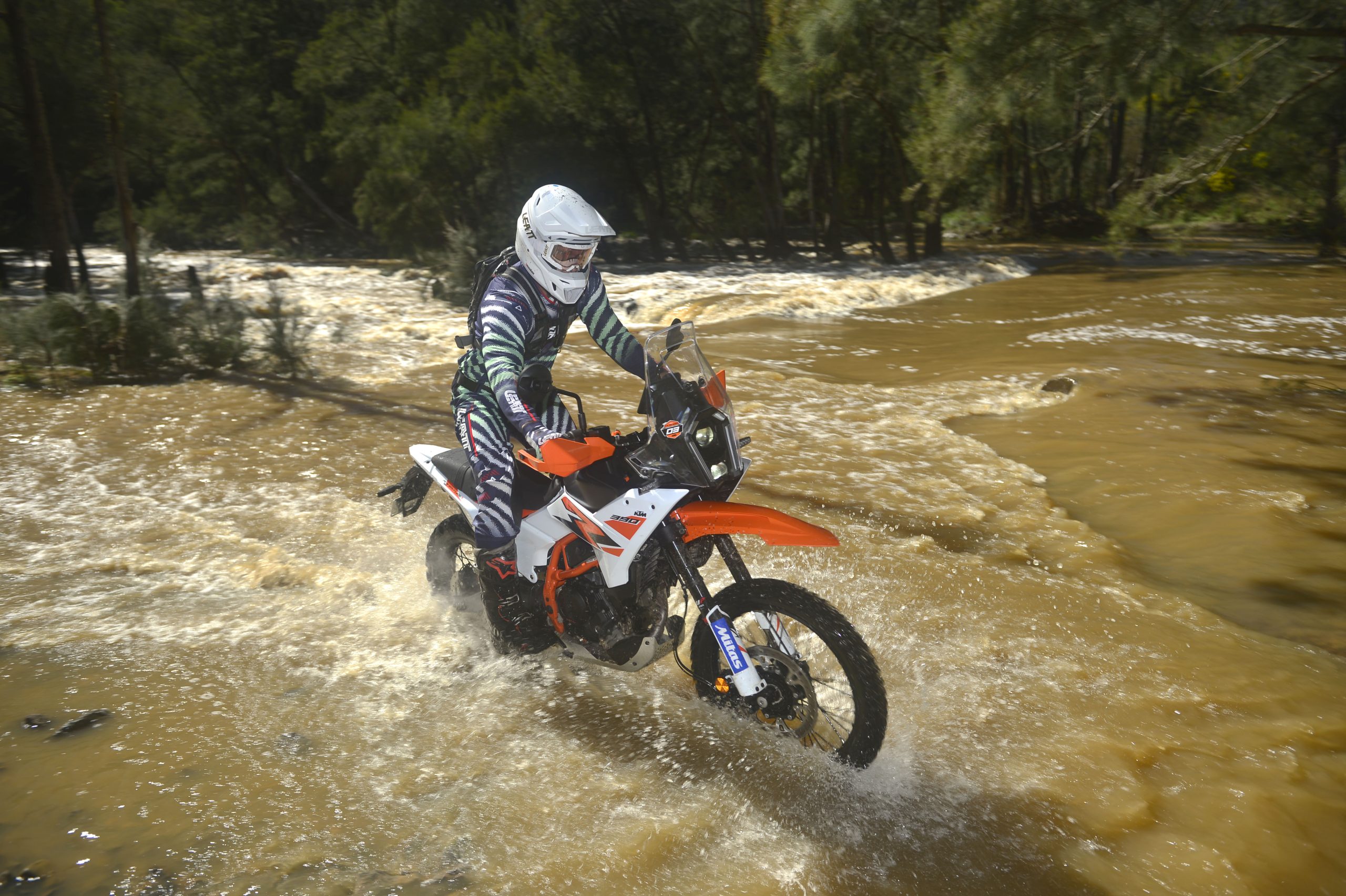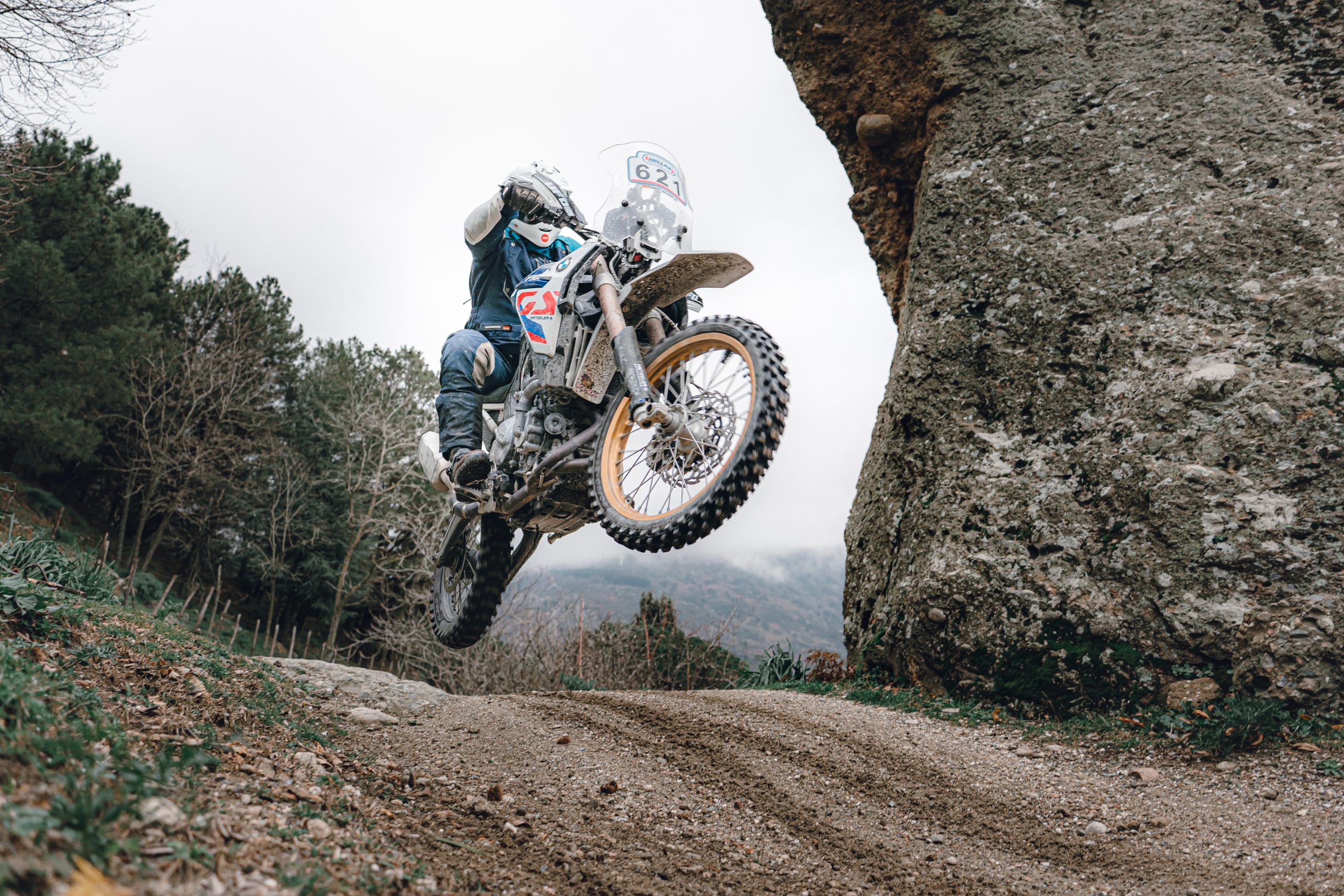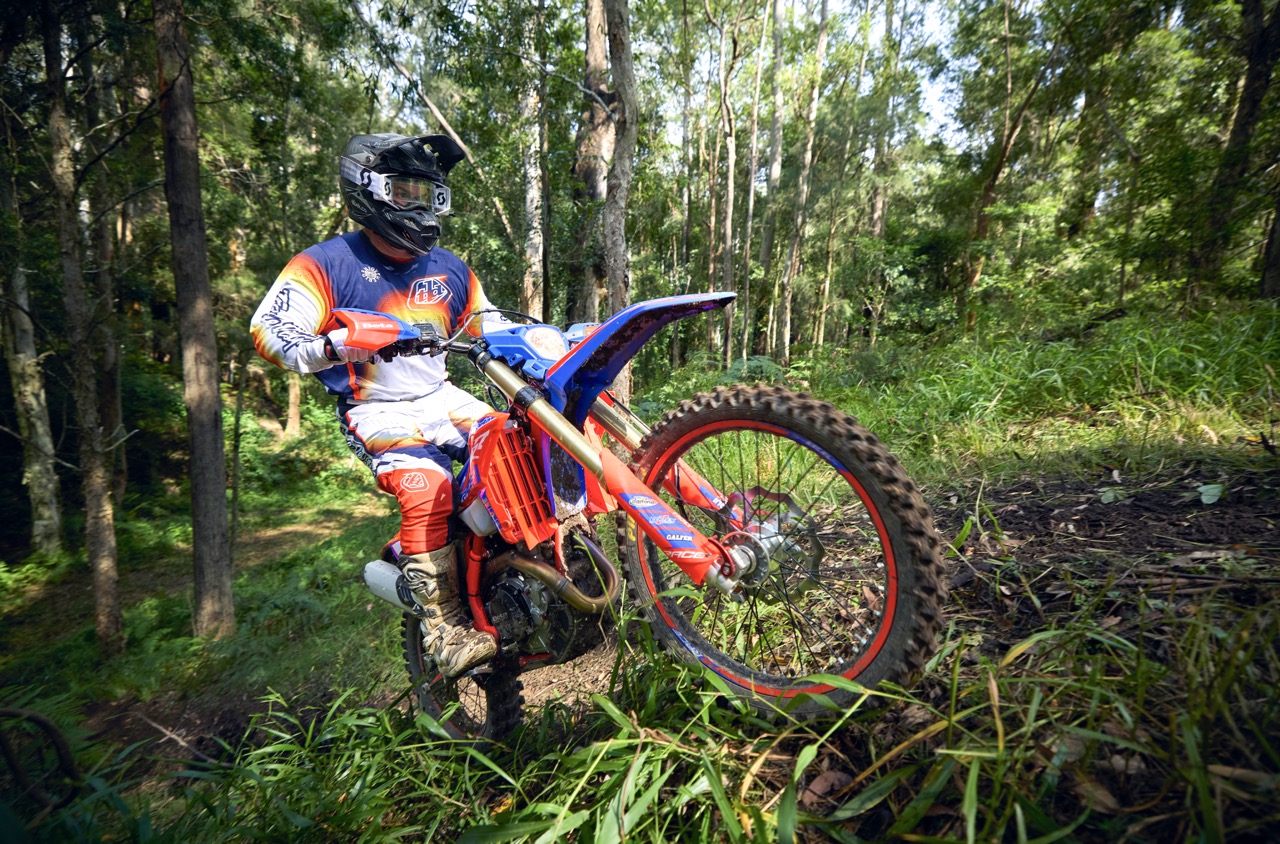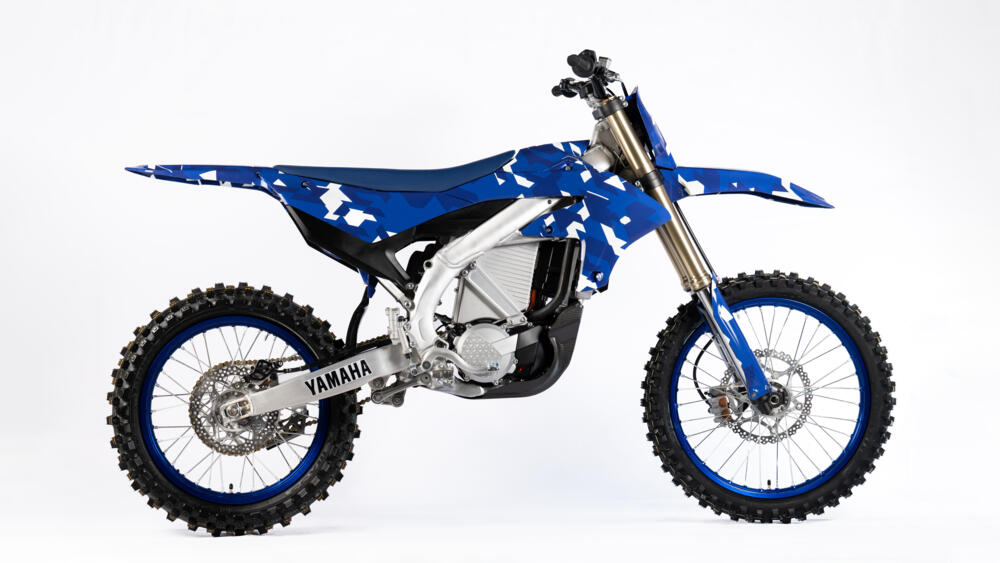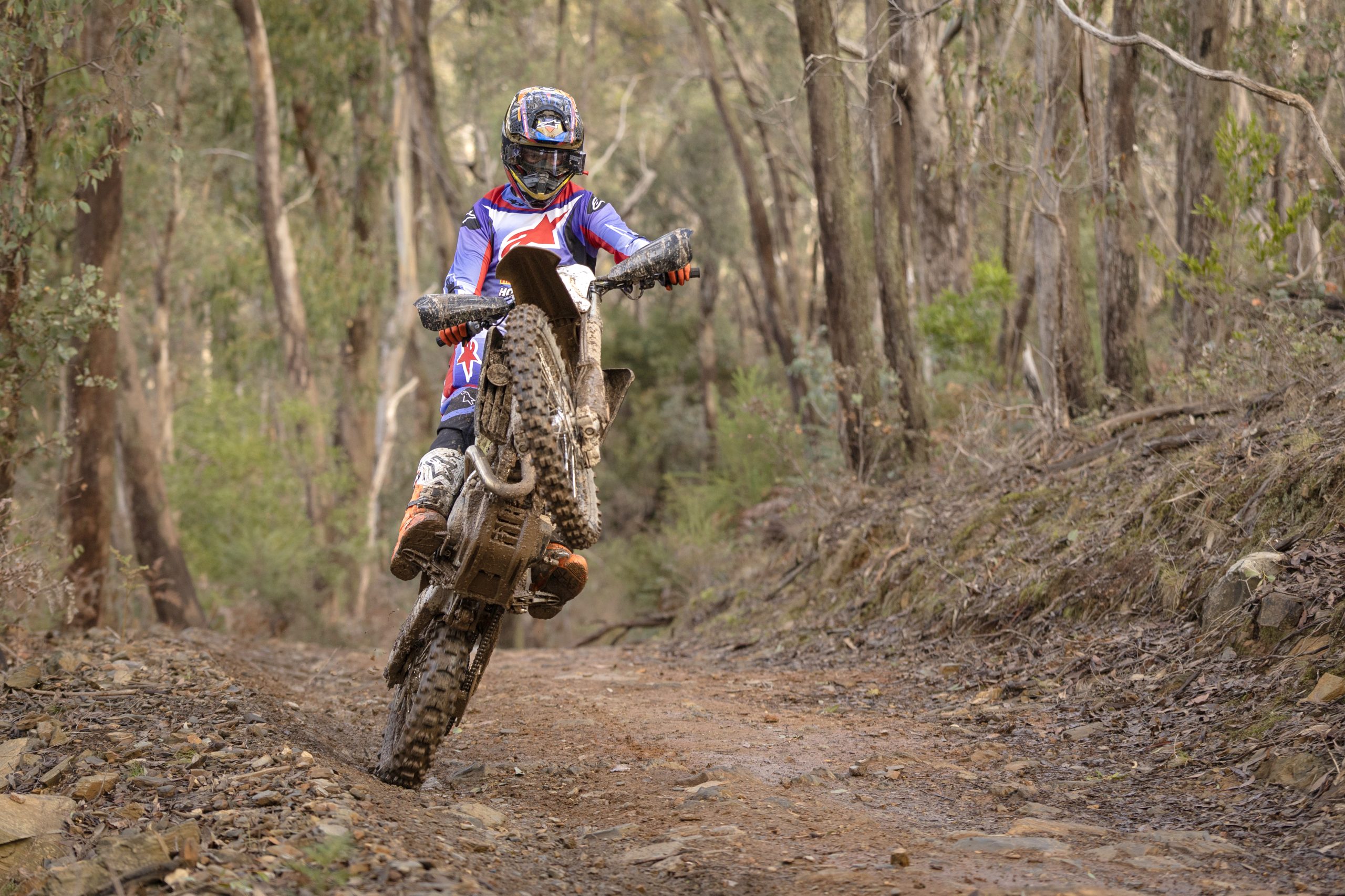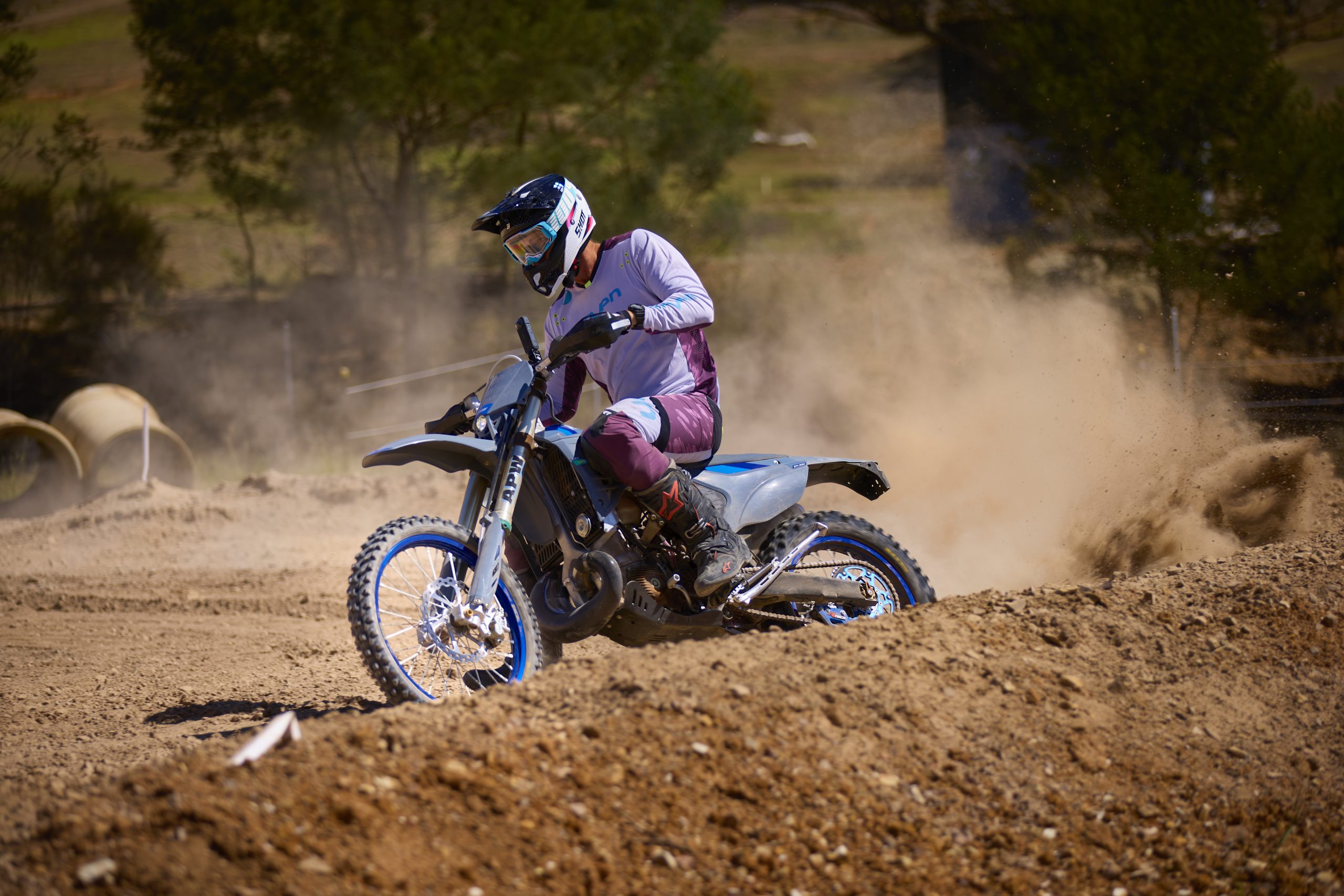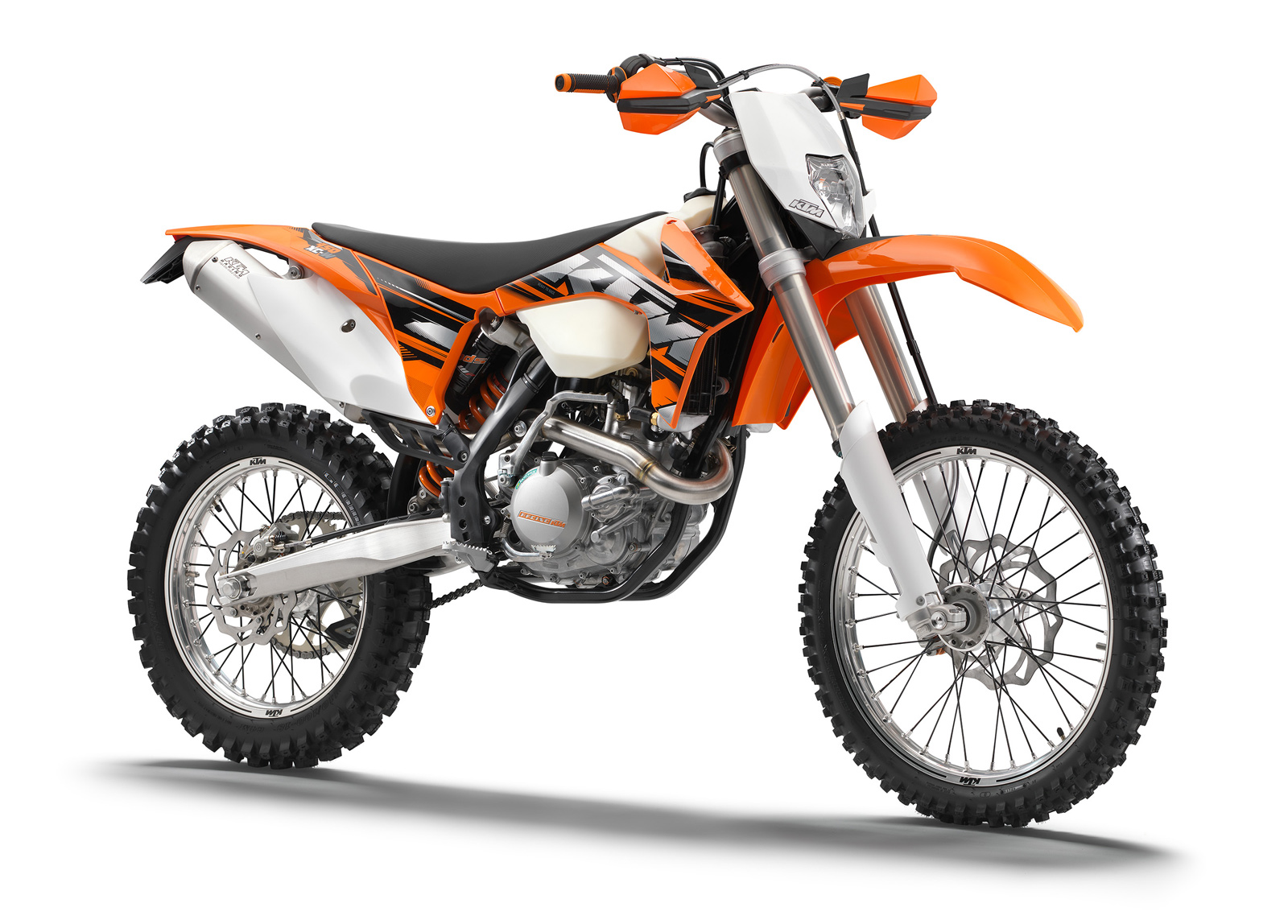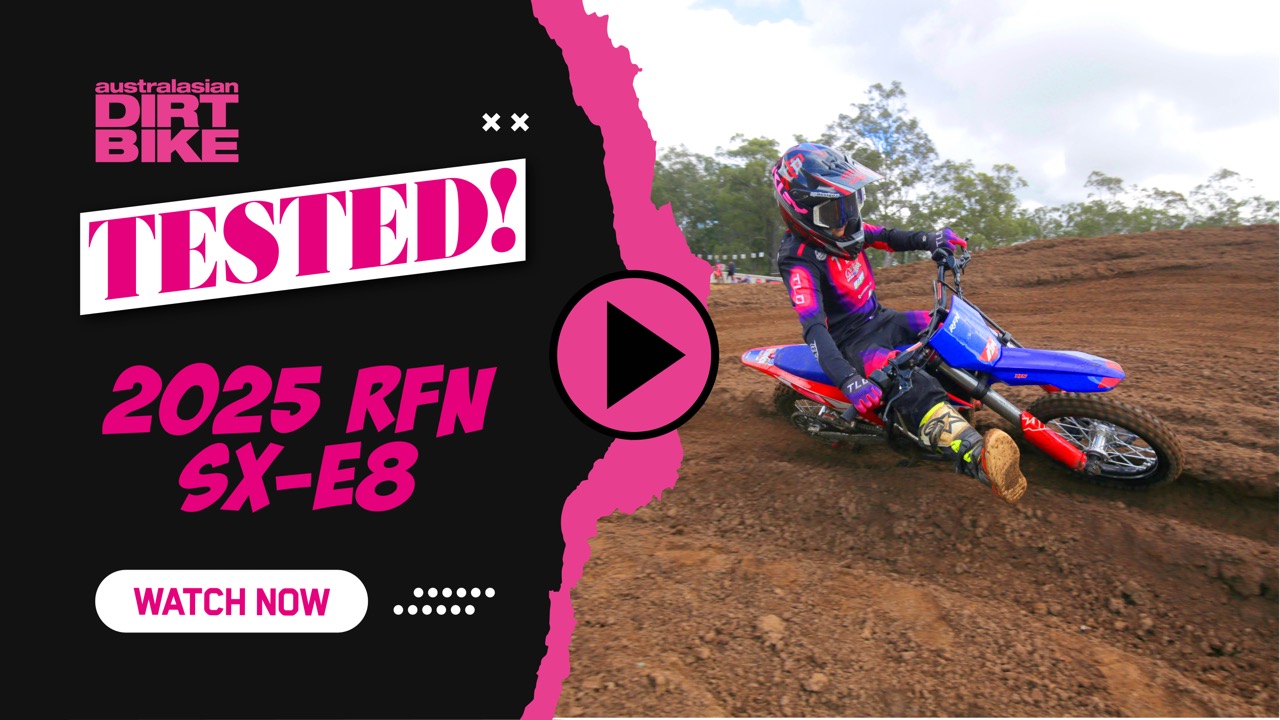If electric balance bikes had a pecking order, the Kawasaki Elektrode 20 would sit right at the top: big, burly and ready to smoke all the others. Kawasaki didn’t just scale up the Elektrode 16 – it built a mini dirtbike disguised as an electric balance bike. With front suspension, hydraulic disc brakes, a 750W hub motor and a top speed of 39 km/h, it’s a serious machine.
It’s already made a name for itself in the Supercross pits, with factory Kawasaki rider Jason Anderson using one to zip around between motos. But what’s even more impressive? Jax, at five years old and 125cm tall, has been ripping on it too! Thanks to the adjustable seat height (550mm-693mm) and handlebar, he can still get his feet down, and the low centre of gravity of the aluminium frame makes it easy to manage.
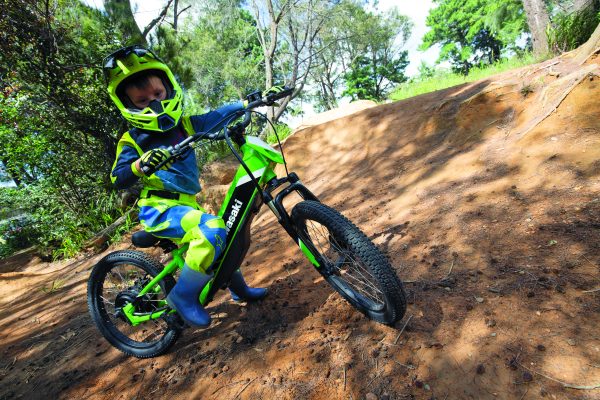
A Whole Different Beast
Jax has spent plenty of time on the Elektrode 16 (tested in issue #531), which already stood out among the other electric balance bikes Jax had tested for its robust build, midrange torque and reliability. But moving up to the 20-inch version feels like jumping from a mini electric balance bike to a full-blown dirtbike.
Where the Elektrode 16 used a 250W in-wheel motor and maxed out at 30km/h, the Elektrode 20 throws down with a 750W motor and a 39km/h top speed. The difference in power is night and day with loads more torque and acceleration. The torque curve is strong but manageable, delivering a smooth, predictable punch that isn’t jerky, even right off the bottom.
And while Jax snapped chains on other mid-drive electric bikes, the hub motor setup on both Elektrode models eliminates that problem entirely. No chains, no sprockets, no maintenance.
Built for the Rough Stuff
One of the biggest upgrades over the Elektrode 16 is the addition of a 28mm telescopic fork, which completely transforms the ride. The 16-inch version was solid, but it could be rough on anything bumpier than a bike path – Kawasaki even suggested dropping tyre pressure to soften it up. With the Elektrode 20, there’s no need for that hack – the front suspension does the work, absorbing bumps, jumps and chatter without jarring the rider.
Matched with 20-inch spoked wheels and proper 2.125-inch wide tyres, it rolls over terrain far better than the smaller model. And with a wheelbase of 989mm, it feels stable at speed but because the steering angle is so tight, you can still turn it easily.
Jax has been riding it across paths, BMX tracks and fire roads, and the bike handles more like a mini dirtbike than a balance bike. The standing position is excellent – he slightly bends at the knees and hips naturally, just like on his proper dirtbikes.

Top brakes
If there was one weak spot on the Elektrode 16, it was the brakes. While they worked, they wore quickly, and the adjusters stripped out after about 100 hours of riding.
Kawasaki clearly listened because the Elektrode 20’s braking system is a massive upgrade. Now featuring 160mm mechanical disc brakes on both the front and rear, it stops hard, stops consistently and doesn’t fade. Even the adjusters haven’t worn out. For a bike that hits 40km/h with ease, good brakes aren’t optional, they’re essential.
Long distance runner
Kawasaki claims the Elektrode 20’s in-frame 50.4V, 10.2Ah lithium-ion battery will run for up to three hours in Low mode or one hour in High mode. But we found real-world results are much better than that.
For reference, Jax rides the bike to school every morning – a 10-minute trip each way. After a full week of commuting, it had only dropped one bar on the battery gauge! It’s up and down a hill so he coasts down the descent without any throttle which would save battery power but even after a full week of riding, we were blown away. He will ride for two to three hours in one hit on the weekend and we still haven’t flattened the battery before he runs out of steam himself! So, we can’t actually tell you how long you’ve got until it dies because we haven’t gotten there yet.
By comparison, the Elektrode 16 already had solid battery life, lasting longer than Kawasaki’s official 150-minute estimate. But the 20-inch version pushes that even further, despite its larger motor and higher speeds.
Charging takes four hours, and the battery is rated for 500 charge cycles before dropping to 80% of its original capacity. Given how efficient it is, that’s years of use before needing a replacement.

Big, But Not Too Big
At 20.9kg, the Elektrode 20 is naturally heavier than the 16-inch model. Lifting it into the ute feels like lifting a push bike – it’s kinda heavy. It might be a struggle for the missus to load it into the station wagon like my better half found but the weight disappears when riding it.
It’s not as flickable as the smaller bike, but for a five-year-old with solid riding skills, the added stability is a bonus rather than a drawback. It’s designed for kids eight years and over but Jax can ride it comfortably. The adjustable seat and ’bar make it adaptable for a wide range of riders – young kids, bigger kids, even lightweight adults.
The foldable pedals with 360-degree rotation are a neat feature too.
Where it sits
The Kawasaki Elektrode 20 is a significant upgrade over the 16-inch model. The increased power, better brakes, front suspension and ridiculously good battery life make it one of the best electric balance bikes we’ve tested.
It takes everything that was great about the Elektrode 16 – the durable hub motor, reliable battery and kid-friendly adjustability – and adds more power, better control and a smoother ride.
As for where it fits, a bike this big is starting to look more like a dirtbike than an electric balance bike. The solid rear-end means it will never replace your dirtbike but considering Jax could ride it at five years old and I could ride it at 39, it’s an excellent option for your kids to ride the local bike track and skate parks, and for you to rip down the shops to get the milk and bread.
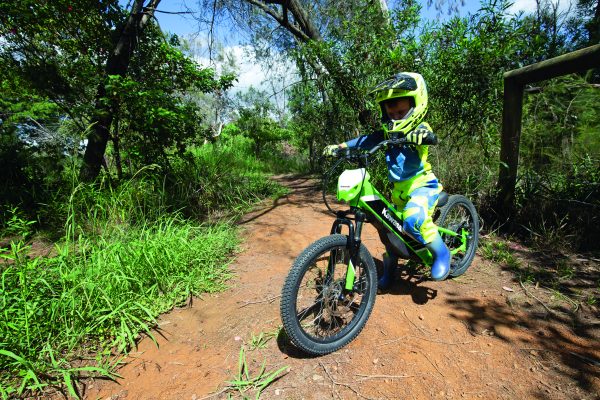
16- or 20-inch?
With a three year old and a five year old obsessed with riding, I’d probably go the 12-inch options out there then if your kid is confident on it and tall, potentially jump straight to the 20-inch to save some coin. Here’s why:
- Faster, stronger and more capable than the Elektrode 16 so they will ride it for more years and you can ride it too!
- 39km/h top speed with a 750W motor – twice the power of the 16-inch model
- Front suspension fork absorbs bumps and makes off-road riding way smoother
- Massive battery life – outlasts the rider, not the other way around
- Upgraded 160mm disc brakes – no fade, no premature wear
- Adjustable seat means younger riders and adults can ride it
What could go wrong?
With bikes new to the market like this one, we often get asked what could potentially break? In the six months we’ve had the Elektrode 20, nothing has broken. But we went digging around online and some people have had issues with the below:
Throttle Response: Some riders have observed a slight delay between twisting the throttle and the motor’s power delivery. This lag can affect the riding experience, especially for those accustomed to immediate acceleration.
Throttle Malfunction: There have been instances where the throttle ceased to function correctly. But, alas, there is a troubleshooting guide to address it, apparently.
Lack of Kickstand: Some people got frustrated that it didn’t have a kickstand. That didn’t bother us as Jax just lay it over and that can be easier than him trying to get a kickstand down with his feet or hands.
